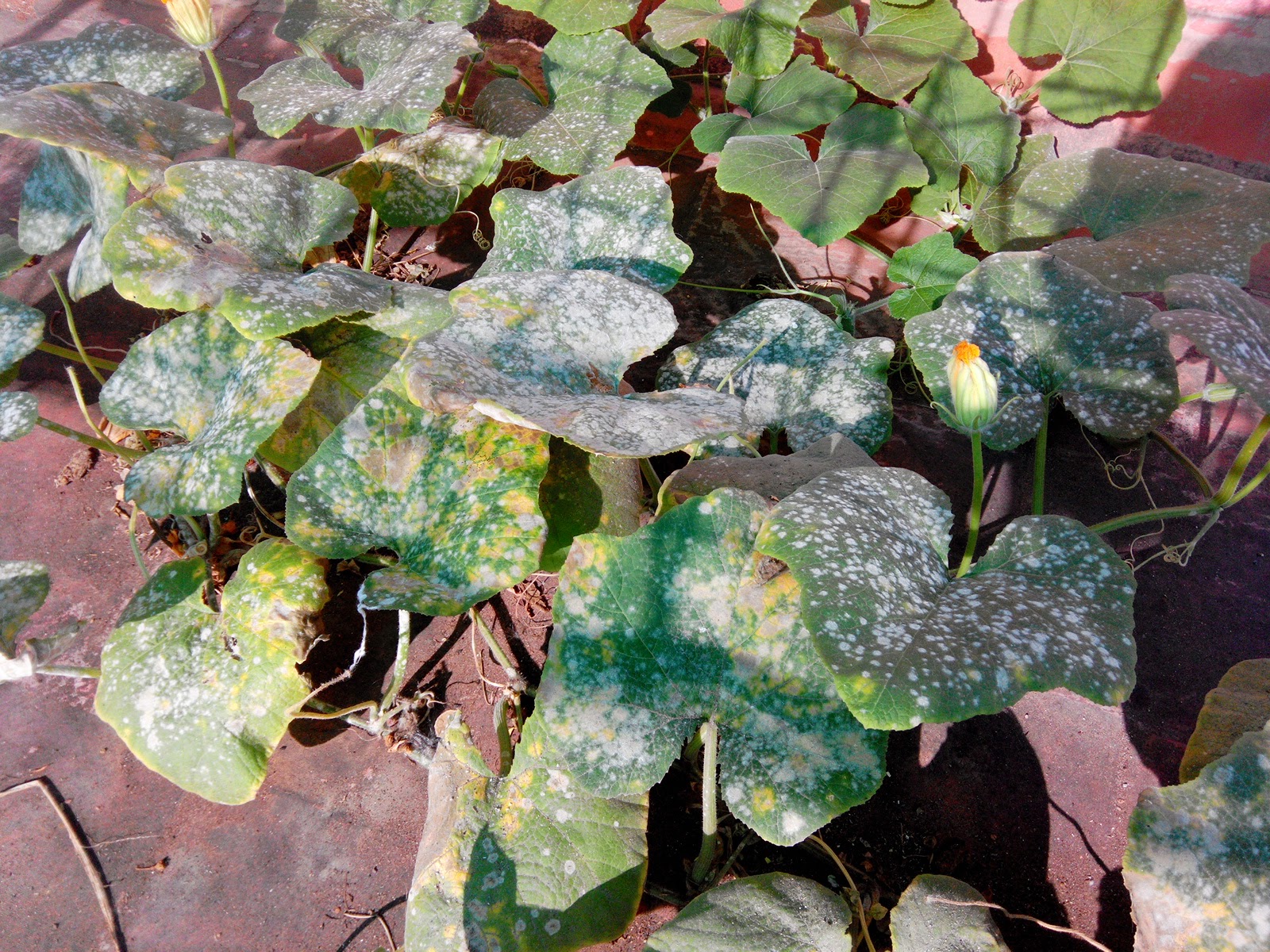Now there is growing demand for non-chemical means for controlling diseases, insects, and other pests. Allergic reactions to chemicals, a desire to grow purely organic vegetables, or protection for young children are all reasons to use non-chemical controls for pests. If used correctly, non-chemical pest controls can be very effective in keeping your garden healthy.
VFNT Seeds: The easiest way to avoid disease problems is to choose varieties of vegetables that are resistant to disease. Over the years, many disease-resistant vegetable varieties have been developed. You'll notice that seed packages and catalog descriptions of some vegetable varieties include V, F, N, and T in the name. These abbreviations indicate disease resistance that has been bred into the variety. V and F stand for verticillium and fusarium wilts, which are fungi that cause tomato plants to turn yellow, wilt, and die. N indicates nematode tolerance. Nematodes are tiny parasitic worms that cause knots on stems and roots of vegetables. Tobacco mosaic virus, indicated by a T, affects foliage by yellowing and curling; it also causes severe root damage.
Water Early: If you water your plants with a from overhead, it's best to water early in the day so plants can dry off before night falls. Foliage that stays wet for long periods of time is susceptible to leaf diseases, fungi that grow on leaves, tender stems, and flower buds. This tends to be a problem when plants stay wet throughout the night: Fungi spread quickly during the cool, moist evening hours. The fungi will cause the plant to be weakened, flowers will fall off, and fruit will begin to spot and become soft.
Paper Collar
You may notice one morning that a couple of healthy young plants have keeled over and died. This is a pretty sure indication that cutworms are present. Feeding at night and hiding during the day, cutworms are most destructive early in the season, cutting off transplants at ground level. To prevent the cutworm from finding your cabbages, peppers, and tomatoes, wrap each stem with a paper or thin cardboard collar as you transplant it into the garden. The collar should reach at least one inch below and one inch above the soil level. In time, the collar will disintegrate; by then the danger of cutworm damage will have passed.
Beer: A Handy Bait
Snails and slugs pose a problem for many garden plants, especially during seasons with plenty of rain and rich, succulent growth. Lettuce and potatoes are especially susceptible to slug damage: Irregular holes will be found in the leaves. Snails and slugs feed mostly at night, hiding from the hot sun.
One way to control these pests is to remove the places where they hide; but if you're using mulch in the garden and supplying plants with the moisture they need, you're still likely to find snails and slugs. Although commercial baits are available, shallow pans of beer placed throughout the garden will attract and drown the pests.
Beneficial Insects
Not all insects in the garden are pests. Most are benign residents, and some are actually beneficial, providing a means to control insect pests. Insects such as ladybugs, lacewing flies, and praying mantises feed on bugs that are destructive to your crops. You should protect them when you find them in your garden. Harmless to your garden plants, these useful insects gorge on aphids, beetles, caterpillars, grasshoppers and other bothersome insects.
